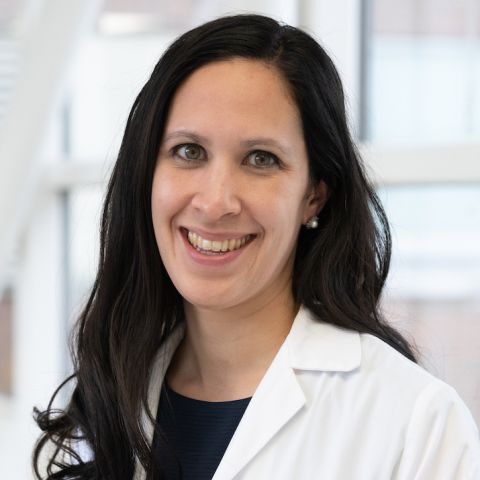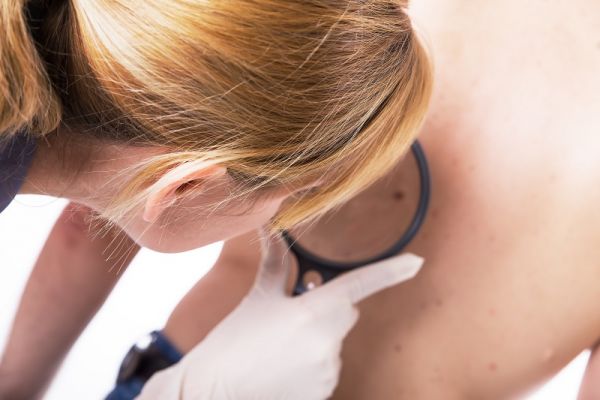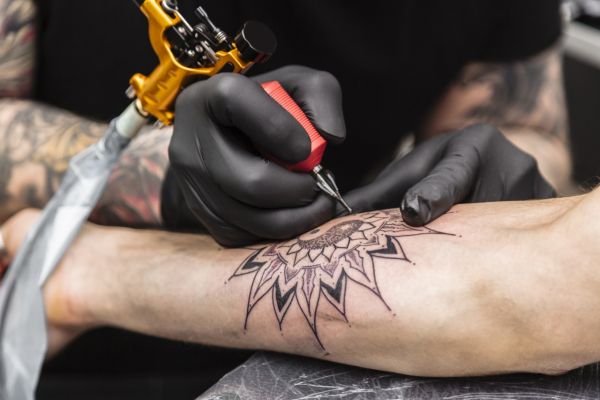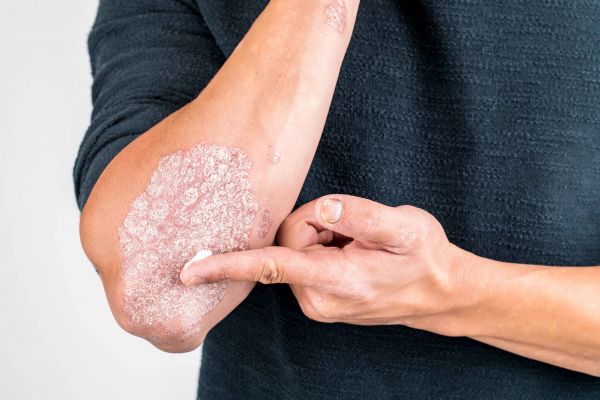What you need to know about this rare, but on the rise, skin cancer type
Of the millions of people who develop skin cancer each year in the United States, only about 3,000 are diagnosed with Merkel cell carcinoma, a very rare type of skin cancer. It begins in a special type of skin cell — called a Merkel cell — that’s located near the nerve endings in the skin and is involved in the sensation of touch.
Merkel cell carcinoma, also called neuroendocrine carcinoma of the skin or trabecular cancer, occurs when the Merkel cells grow uncontrollably. While this cancer is rare, it is very aggressive and can be deadly, three- to five- times more than melanoma. “There is high risk for it to recur and metastasize,” says Kimberly Brady, MD, Director of Dermatologic Surgery at Roswell Park Comprehensive Cancer Center.
What does Merkel cell carcinoma look like?
Merkel cell cancer nodules typically are not painful and don’t have other symptoms like itching or bleeding. Merkel cell cancer usually appears on sun-exposed skin as a single lump that is:
- Fast-growing
- Painless
- Firm
- Dome-shaped or raised
- Red or violet in color
Almost half are found on the head and neck, and one in four are found on the arms and shoulders, Dr. Brady says. “They look like firm, shiny, smooth nodules on the skin,” she adds. “Many people think it’s a cyst.”
However, patients will notice that it grows rapidly. “The tumor can spread quickly to other parts of the body,” she ways. When patients are first diagnosed, more than a third already have spread to other parts of the body. “Only about 65% have only a local tumor present, with no spread to the lymph system,” Dr. Brady says. “Even melanomas are less likely to metastasize compared to Merkel cell carcinoma.”
Who is at risk for Merkel cell cancer?
The primary risk factor is exposure to ultraviolet (UV) sun radiation. This cancer typically strikes older adults with lighter-toned skin. “It starts most often in areas of skin exposed to the sun, especially the head, neck, arms and legs,” she says.
Family history does not seem to play a role, but a weakened immune system may increase your risk. This cancer is more common in men, by a two-to-one ratio, Dr. Brady says, and the average patient age is mid-70s. Roswell Park treats about 30 to 35 Merkel cell carcinoma patients each year.
Why Roswell Park for skin cancer?
Learn more about the multidisciplinary care we provide when it comes to the treatment of skin cancer.
Learn MoreHow is Merkel cell carcinoma treated?
Treatments depend on the size of the tumor and whether it has spread. “Patients need an appropriate work-up to establish this,” Dr. Brady says. That usually includes performing a biopsy of the tumor and nearby lymph nodes, along with MRI, PET or CT scans to check for cancer spread.
“When all this information is in place, a treatment plan can be set up,” she says. That plan follows “a fairly complicated algorithm,” she admits. The tumor is usually surgically removed first. “Then, radiation therapy plays a large role, at the primary tumor site or lymph node basins. For patients with advanced Merkel cell carcinoma, immunotherapy is preferred over chemotherapy.
“Immunotherapy is designed to boost the body’s own immune system to recognize the cancer as something foreign and destroy it,” she explains. However, immunotherapy, usually delivered by infusions, poses side effects, too. These can include pain and swelling, flu-like symptoms, cardiovascular and gastrointestinal issues, inflammatory reactions and others. “We keep patients on it for as long as they can tolerate it, which can be a couple of years. Chemotherapy may be used in patients who do not respond to immunotherapy, who have a contraindication to immunotherapy or if their cancer recurs.”
Can Merkel cell carcinoma be cured?
In some cases, it can, Dr. Brady says. “However, it is highly aggressive. A lot of cases recur, often within one year. The earlier it is caught, the better the odds of successful treatment.” But because the cancer has often spread before it has even been detected, the five-year overall survival rate is only about two-thirds of patients, she says.
Managing Merkel cell cancer requires a multidisciplinary team approach, Dr. Brady says. A dermatologist usually is the first to identify the lesion. After diagnosis, the cancer is managed by a team that may include a surgical oncologist, medical oncologist, radiation oncologist, pathologist, radiologist and other specialists, because “the cancer can almost go anywhere — skin, lungs, brain,” she says.
“A team approach is the key to treating this type of skin cancer, because it is so aggressive and follows a very complicated treatment algorithm,” Dr. Brady says. “Roswell Park’s team approach begins with our weekly tumor board.” At this meeting, members of each department gather to discuss complex cases. They review pathology, imaging studies and blood work, then come up with the best individualized plan to treat each case.
“Successful treatment involves everybody coming together and communicating with each other to determine what the best plan is,” Brady continues. “Things can get lost when one individual is talking to another and you are not having everyone in the same conversation at the same time. Communication is key in this approach and it is unique to large cancer centers like Roswell Park.”




